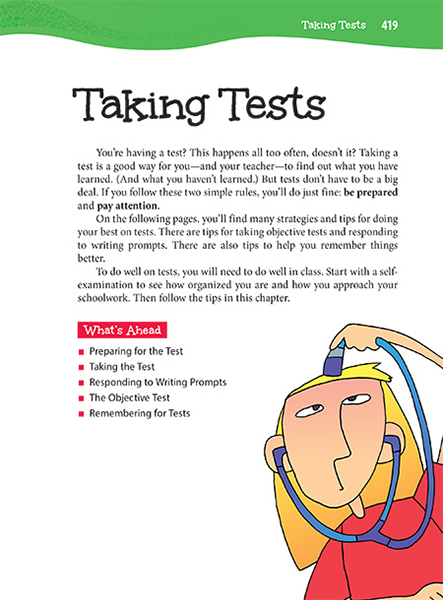Page 419 from

Start-Up Activity
Ask your students to write one multiple-choice, one fill-in-the-blank, and one true-false question about a subject you are studying. Then have each student trade questions with a partner, who will try to answer them.
Afterward, ask your students the following:
- Which type of question was hardest to answer?
- Which type was easiest?
- What strategies did you use to answer the different types of questions?
Let students know that this chapter has many strategies that they can use to succeed on tests.
Think About It
“Forget past mistakes. Forget failures. Forget everything except what you’re doing now and do it.”
— William Durant

Start-Up Activity
Ask your students to write one multiple-choice, one fill-in-the-blank, and one true-false question about a subject you are studying. Then have each student trade questions with a partner, who will try to answer them.
Afterward, ask your students the following:
- Which type of question was hardest to answer?
- Which type was easiest?
- What strategies did you use to answer the different types of questions?
Let students know that this chapter has many strategies that they can use to succeed on tests.
Think About It
“Forget past mistakes. Forget failures. Forget everything except what you’re doing now and do it.”
— William Durant








